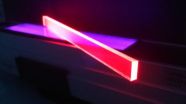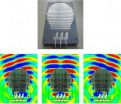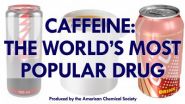(Press-News.org) A house window that doubles as a solar panel could be on the horizon, thanks to recent quantum-dot work by Los Alamos National Laboratory researchers in collaboration with scientists from University of Milano-Bicocca (UNIMIB), Italy. Their project demonstrates that superior light-emitting properties of quantum dots can be applied in solar energy by helping more efficiently harvest sunlight.
"The key accomplishment is the demonstration of large-area luminescent solar concentrators that use a new generation of specially engineered quantum dots," said lead researcher Victor Klimov of the Center for Advanced Solar Photophysics (CASP) at Los Alamos.
Quantum dots are ultra-small bits of semiconductor matter that can be synthesized with nearly atomic precision via modern methods of colloidal chemistry. Their emission color can be tuned by simply varying their dimensions. Color tunability is combined with high emission efficiencies approaching 100 percent. These properties have recently become the basis of a new technology – quantum dot displays – employed, for example, in the newest generation of the Kindle Fire ™ e-reader.
Light-harvesting antennas
A luminescent solar concentrator (LSC) is a photon management device, representing a slab of transparent material that contains highly efficient emitters such as dye molecules or quantum dots. Sunlight absorbed in the slab is re-radiated at longer wavelengths and guided towards the slab edge equipped with a solar cell.
Klimov explained, "The LSC serves as a light-harvesting antenna which concentrates solar radiation collected from a large area onto a much smaller solar cell, and this increases its power output."
"LSCs are especially attractive because in addition to gains in efficiency, they can enable new interesting concepts such as photovoltaic windows that can transform house facades into large-area energy generation units," said Sergio Brovelli, who worked at Los Alamos until 2012 and is now a faculty member at UNIMIB.
Because of highly efficient, color-tunable emission and solution processability, quantum dots are attractive materials for use in inexpensive, large-area LSCs. One challenge, however, is an overlap between emission and absorption bands in the dots, which leads to significant light losses due to the dots re-absorbing some of the light they produce.
"Giant" but still tiny, engineered dots
To overcome this problem the Los Alamos and UNIMIB researchers have developed LSCs based on quantum dots with artificially induced large separation between emission and absorption bands (called a large Stokes shift).
These "Stokes-shift" engineered quantum dots represent cadmium selenide/cadmium sulfide (CdSe/CdS) structures in which light absorption is dominated by an ultra-thick outer shell of CdS, while emission occurs from the inner core of a narrower-gap CdSe. The separation of light-absorption and light-emission functions between the two different parts of the nanostructure results in a large spectral shift of emission with respect to absorption, which greatly reduces losses to re-absorption.
To implement this concept, Los Alamos researchers created a series of thick-shell (so-called "giant") CdSe/CdS quantum dots, which were incorporated by their Italian partners into large slabs (sized in tens of centimeters) of polymethylmethacrylate (PMMA). While being large by quantum dot standards, the active particles are still tiny - only about hundred angstroms across. For comparison, a human hair is about 500,000 angstroms wide.
"A key to the success of this project was the use of a modified industrial method of cell-casting, we developed at UNIMIB Materials Science Department" said Francesco Meinardi, professor of Physics at UNIMIB.
Spectroscopic measurements indicated virtually no losses to re-absorption on distances of tens of centimeters. Further, tests using simulated solar radiation demonstrated high photon harvesting efficiencies of approximately 10% per absorbed photon achievable in nearly transparent samples, perfectly suited for utilization as photovoltaic windows.
Despite their high transparency, the fabricated structures showed significant enhancement of solar flux with the concentration factor of more than four. These exciting results indicate that "Stokes-shift-engineered" quantum dots represent a promising materials platform. It may enable the creation of solution processable large-area LSCs with independently tunable emission and absorption spectra.
INFORMATION:
Publication: A research paper, "Large-area luminescent solar concentrators based on 'Stokes-shift-engineered' nanocrystals in a mass-polymerized PMMA matrix," is published online this week in Nature Photonics.
Funding: The Center for Advanced Solar Photophyscis (CASP) is an Energy Frontier Research Center funded by the Office of Science of the US Department of Energy.
The work of the UNIMIB team was conducted within the UNIMIB Department of Materials Science and funded by Fondazione Cariplo (2012-0844) and the European Community's Seventh Framework Programme (FP7/2007-2013; grant agreement no. 324603).
About Los Alamos National Laboratory
Los Alamos National Laboratory, a multidisciplinary research institution engaged in strategic science on behalf of national security, is operated by Los Alamos National Security, LLC, a team composed of Bechtel National, the University of California, The Babcock & Wilcox Company, and URS for the Department of Energy's National Nuclear Security Administration.
Los Alamos enhances national security by ensuring the safety and reliability of the U.S. nuclear stockpile, developing technologies to reduce threats from weapons of mass destruction, and solving problems related to energy, environment, infrastructure, health, and global security concerns.
Shiny quantum dots brighten future of solar cells
Photovoltaic solar-panel windows could be next for your house
2014-04-14
ELSE PRESS RELEASES FROM THIS DATE:
UT Dallas study: Youth who fail to envision future commit more crimes
2014-04-14
In a UT Dallas study involving serious youth offenders, the answer to one open-ended question predicted the teenagers' offending patterns for the next seven years: "How long do you think you'll live?"
According to the study, having little hope for the future encourages offending over time.
Author Dr. Alex Piquero said the study found those who don't view a very long life ahead of them offend at very high rates and commit more serious offenses, while those who believe they're going to die much later in life offend much less.
"In a lot of distressed communities and for ...
Device turns flat surface into spherical antenna
2014-04-14
WASHINGTON D.C., April 14, 2014 -- By depositing an array of tiny, metallic, U-shaped structures onto a dielectric material, a team of researchers in China has created a new artificial surface that can bend and focus electromagnetic waves the same way an antenna does.
This breakthrough, which the team is calling the first broadband transformation optics metasurface lens, may lead to the creation of new types of antennas that are flat, ultra low-profile or conformal to the shape of curved surfaces.
The new lens, described in AIP Publishing's journal Applied Physics Letters, ...
The science of caffeine, the world's most popular drug (video)
2014-04-14
WASHINGTON, April 14, 2014 — It seems there are new caffeine-infused products hitting the shelves every day. From energy drinks to gum and even jerky, our love affair with that little molecule shows no signs of slowing. In the American Chemical Society's (ACS') latest Reactions video, we look at the science behind the world's most popular drug, including why it keeps you awake and how much caffeine is too much. The video is available at http://youtu.be/YuJOhpNS0IY.
INFORMATION:
Subscribe to the series at Reactions YouTube, and follow us on Twitter @ACSreactions to be ...
Study gives high marks to NC Pre-K program
2014-04-14
Scientists from UNC's Frank Porter Graham Child Development Institute have released their new study of NC Pre-K, the state's program to prepare four-year-olds for success in kindergarten. According to FPG's report, students enrolled in NC Pre-K show significant gains across all areas of learning.
"Children are progressing at an even greater rate during their participation in NC Pre-K than expected for normal developmental growth," said senior scientist Ellen Peisner-Feinberg, who leads the FPG team that has studied the program and provided it with recommendations for ...
Low birth weight, less breastfeeding create later health risks
2014-04-14
Lower weight babies and babies who aren't breastfed or not breastfed for long are at greater risk of developing chronic inflammation and related health problems later in life, according to a new study.
"There were good reasons to hypothesize that breastfeeding was important to influencing levels of inflammation in adulthood," says Thomas McDade (Northwestern University), a CIFAR (Canadian Institute for Advanced Research) Fellow in the Child & Brain Development program. "It changes the microbiome. It promotes development of the immune system. Children who are breastfed ...
Antibiotics alone are a successful treatment for uncomplicated acute appendicitis in kids
2014-04-14
Using antibiotics alone to treat children with uncomplicated acute appendicitis is a reasonable alternative to surgery that leads to less pain and fewer missed school days, according to a pilot study. The research, led by a team at Nationwide Children's Hospital and published online April 12 in the Journal of the American College of Surgeons, is the first prospective study on nonoperative management of acute appendicitis in pediatric patients in the United States.
Researchers enrolled 77 patients age 7 to 17 who were diagnosed with uncomplicated acute appendicitis by ...
Irrational health beliefs linked to skipping cardiac rehab sessions
2014-04-14
COLUMBUS, Ohio – Heart patients with beliefs about health that aren't based on medical evidence are more likely to skip sessions of cardiac rehabilitation, new research suggests.
In the Ohio State University study, a higher number of these beliefs – referred to as "irrational health beliefs" on a standard measure of these thoughts – was associated with lower adherence to a prescribed cardiac rehab program.
Among the irrational beliefs assessed: Doubting the preventive power of the flu vaccine or believing, based on family history alone, that it's safe to smoke cigarettes ...
Three new species of yellow-shouldered bats discovered in museum collections
2014-04-14
Scientists at Chicago's Field Museum and international collaborators have reconstructed the phylogeny and biological history for the Yellow-shouldered bats in the New World tropics, the region of the Earth surrounding the equator. In-depth analysis of mitochondrial and nuclear DNA sequences uncovered three species new to science, each having previously been confused with another species. Since 1960, when modern studies on this group began, Sturnira has grown from eight species to 22. The newest additions were described in a new study, published online in ZooKeys.
The ...
Ex vivo efficacy of C1s antibody as Complement inhibitor in cold agglutinin disease
2014-04-14
SOUTH SAN FRANCISCO, Calif.--True North Therapeutics, Inc., announced today a publication demonstrating that the company's C1s antibody prevents the destruction of human red blood cells exposed to plasma samples of patients with a type of autoimmune hemolytic anemia (AIHA). The article entitled "TNT003, an inhibitor of the serine protease C1s, prevents complement activation induced by cold agglutinin disease patient autoantibodies" was published on-line in the journal Blood earlier this month. TNT003 is the murine analog of True North's lead humanized monoclonal antibody ...
Neuroscientists: Brain activity may mark the beginning of memories
2014-04-14
By tracking brain activity when an animal stops to look around its environment, neuroscientists at the Johns Hopkins University believe they can mark the birth of a memory.
Using lab rats on a circular track, James Knierim, professor of neuroscience in the Zanvyl Krieger Mind/Brain Institute at Johns Hopkins, and a team of brain scientists noticed that the rats frequently paused to inspect their environment with head movements as they ran. The scientists found that this behavior activated a place cell in their brain, which helps
the animal construct a cognitive map, ...
LAST 30 PRESS RELEASES:
Chronic breathlessness emerging as a hidden strain on hospitals
Paleontologists find first fossil bee nests made inside fossil bones
These fossils were the perfect home for ancient baby bees
Not everyone reads the room the same. A new study examines why.
New research identifies linked energy, immune and vascular changes in ME/CFS
Concurrent frailty + depression likely boost dementia risk in older people
Living in substandard housing linked to kids’ missed schooling and poor grades
Little awareness of medical + psychological complexities of steroid cream withdrawal
Eight in 10 trusts caring for emergency department patients in corridors, finds BMJ investigation
NASA’s Webb telescope finds bizarre atmosphere on a lemon-shaped exoplanet
The gut bacteria that put the brakes on weight gain in mice
Exploring how patients feel about AI transcription
Category ‘6’ tropical cyclone hot spots are growing
Video: Drivers struggle to multitask when using dashboard touch screens, study finds
SLU research shows surge in alcohol-related liver disease driving ‘deaths of despair’
Rising heat reshapes how microbes break down microplastics, new review finds
Roots reveal a hidden carbon pathway in maize plants
Membrane magic: FAMU-FSU researchers repurpose fuel cells membranes for new applications
UN Member States pledge to increase access to diagnosis and inhaled medicines for the 480 million people living with COPD
Combination therapy shows potential to treat pediatric brain cancer ATRT
Study links seabird nesting to shark turf wars in Hawai‘i
Legal sports betting linked to sharp increases in violent crime, study finds
Breakthrough AI from NYUAD speeds up discovery of life-supporting microbes
New Eva Mayr-Stihl Foundation funding initiative boosts research at University of Freiburg on adaptation of forests to global change
The perfect plastic? Plant-based, fully saltwater degradable, zero microplastics
Bias in data may be blocking AI’s potential to combat antibiotic resistance
Article-level metrics would provide more recognition to most researchers than journal-level metrics
Satiety’s little helper: Protein that supports appetite regulating protein identified
UF dives deep into predicting storm damage with computer models
A stormy ocean voyage yields insights on the global carbon cycle
[Press-News.org] Shiny quantum dots brighten future of solar cellsPhotovoltaic solar-panel windows could be next for your house




